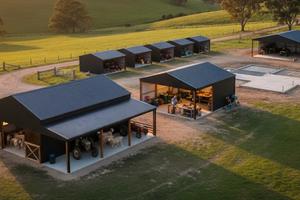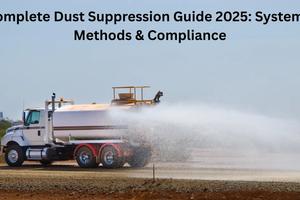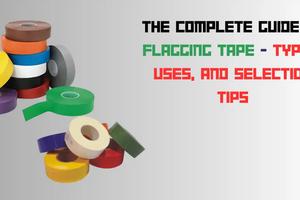Is Shea Butter a Good Whip Conditioner for Kangaroo Whip? | Learn About Leather Care, Alternative Conditioners, And Expert Maintenance Tips

Key Takeaways
Essential insights to remember
The choice of conditioner significantly impacts a whip's longevity and performance
Understanding leather breathability and pore structure is crucial for proper conditioning
Careful application techniques and storage methods are essential for whip maintenance
Different leather types require specific conditioning approaches
Introduction: The Art of Whip Conditioning 🎯
Why Proper Conditioning Matters
In the specialized world of whip craftsmanship, the axiom "a whip is only as good as its care" rings perpetually true. Whether you're a professional stock handler or an enthusiast keeping your prized possession in prime condition, understanding proper whip conditioning is paramount.
The Unique Properties of Kangaroo Leather
Kangaroo leather, renowned for its:
- Exceptional tensile strength 💪
- Superior fiber density
- Remarkable flexibility
- Unparalleled durability
stands apart from conventional leather types. This distinctive material requires meticulous attention to maintain its inherent qualities.
““Pro Tip: Think of your kangaroo whip as a high-performance athlete - it needs the right nutrition and care to perform at its peak.
The Conditioning Conundrum
When it comes to conditioning options, the market offers a plethora of choices. Shea butter has emerged as a topic of heated debate among whip enthusiasts. But before diving into specific conditioners, let's understand what's at stake:
The Stakes of Proper Care
Consider this: a well-maintained kangaroo whip can last generations, while improper conditioning can lead to irreversible damage in mere months. The choice of conditioner isn't just about maintenance—it's about preserving an investment and ensuring optimal performance.
Understanding Leather Properties and Conditioning Needs 🔍
The Science Behind Leather Breathability
Leather's relationship with its environment is remarkably dynamic. Like a living, breathing entity, kangaroo leather maintains a constant exchange with its surroundings through microscopic pores.
Pore Structure and Function
Consider the following essential characteristics:
Environmental Impacts on Leather 🌡️
Critical Environmental Factors
- Temperature Fluctuations: Can cause expansion and contraction
- Humidity Levels: Affects moisture content and flexibility
- UV Exposure: Potentially degrades fiber structure
- Atmospheric Pollutants: May compromise leather integrity
““"Prevention is better than cure - understanding your leather's needs is half the battle won."
The Moisture Balance Paradigm
The Goldilocks Zone
Finding the perfect moisture balance is crucial:
Understanding Conditioning Chemistry 🧪
Key Chemical Interactions
Different conditioning agents interact uniquely with leather:
- Natural Oils: Penetrate deeply, mirror skin's natural lipids
- Synthetic Conditioners: Provide consistent results
- Wax-Based Products: Offer surface protection
- Water-Based Solutions: Enable gentle hydration
Absorption Mechanics
The process follows three key stages:
- Surface contact and initial penetration
- Deep fiber absorption
- Chemical bonding with leather proteins
Shea Butter as a Whip Conditioner 🧈
Chemical Composition and Properties
Shea butter's complex makeup deserves careful consideration when using it on kangaroo leather:
Advantages of Shea Butter 👍
Positive Attributes
- Natural Moisturizing: Deep hydration potential
- Anti-aging Properties: Contains natural antioxidants
- Weather Protection: Creates protective barrier
- Cost-effective: Readily available and affordable
““"While shea butter for sale offers impressive moisturizing properties, its thickness can be both a blessing and a curse for kangaroo leather."
Potential Drawbacks 👎
Critical Concerns
- Pore Clogging
- Heavy molecular structure
- Risk of oversaturation
- Reduced breathability
- Surface Residue
- Sticky texture
- Dust attraction
- Grip interference
Application Considerations 🔧
Proper Application Method
- Preparation
- Clean surface thoroughly
- Test in inconspicuous area
- Ensure room temperature application
- Application Technique
- Use minimal amount
- Apply with microfiber cloth
- Circular motion application
Environmental Factors
Consider these conditions when applying:
Better Alternatives for Kangaroo Whip Conditioning 🏆
Professional Leather Conditioners
Top-Rated Specialized Products
““"The right conditioner is like a tailored suit - it fits perfectly and performs exactly as needed."
Traditional Time-Tested Options 🕰️
Historical Favorites
- Neatsfoot Oil
- Pure vs. Compound variations
- Natural penetration properties
- Long-standing reputation
- Australian Emu Oil
- Traditional aboriginal choice
- Exceptional absorption rate
- Natural leather affinity
Modern Synthetic Solutions 🔬
Contemporary Innovations
- Water-Based Conditioners
- Enhanced penetration formula
- Quick-drying properties
- Minimal color change
- Hybrid Conditioners
- Natural-synthetic blend
- Optimized molecular structure
- Controlled release technology
Application Methods and Frequency 📅
Optimal Application Techniques
- Circular Motion Method
- Ensures even distribution
- Promotes absorption
- Minimizes waste
- Layering Technique
- Multiple thin layers
- Progressive absorption
- Better control
Proper Whip Maintenance Beyond Conditioning 🛠️
Essential Cleaning Techniques
Daily Maintenance Protocol
““"A clean whip is a happy whip - regular maintenance prevents 90% of common issues."
Storage Solutions 📦
Optimal Storage Conditions
- Temperature Control
- Keep between 60-75°F (15-24°C)
- Avoid extreme fluctuations
- Monitor humidity levels
- Storage Position
- Hang vertically when possible
- Use proper coiling techniques
- Avoid tight bends
Breaking In New Whips 🆕
Progressive Breaking-In Process
- Initial Stretching Phase
- Gentle flexing exercises
- Gradual increased movement
- Pattern development
- Control Development
- Start with basic movements
- Build up to complex patterns
- Monitor leather response
Environmental Protection 🌍
Weather Considerations
- Rain Protection
- Immediate drying protocol
- Water-resistant treatment options
- Emergency care procedures
- Sun Exposure Management
- UV protection measures
- Heat damage prevention
- Seasonal care adjustments
Common Conditioning Mistakes to Avoid ⚠️
Over-Conditioning Hazards
““"Less is more - over-conditioning is like drowning your whip in kindness."
Product Selection Errors 🚫
Common Mismatches
- Incompatible Conditioners
- Oil-based on sealed leather
- Heavy waxes on flexible sections
- Silicone-based products
- Wrong pH Levels
- Too acidic
- Too alkaline
- Unbalanced formulas
Application Technique Mistakes 🎯
Improper Methods
- Wrong Direction
- Against grain
- Inconsistent patterns
- Too much pressure
- Temperature Errors
- Cold application
- Heat exposure
- Direct sunlight
Timeline Misjudgments ⏰
Timing Errors
- Premature Use
- Not allowing proper drying
- Rushing between coats
- Early storage
- Delayed Maintenance
- Waiting too long
- Ignoring early signs
- Seasonal neglect
Conclusion: Making the Right Choice for Your Kangaroo Whip 🎯
Key Decision Factors
The journey through whip conditioning options reveals a clear verdict: while shea butter has its merits, specialized leather conditioners emerge as superior choices for kangaroo whips.
Final Recommendations 🎯
Best Practices Summary
- Choose specialized conditioners over generic alternatives
- Maintain regular cleaning and conditioning schedule
- Monitor your whip's response to treatment
- Adjust care routine based on usage and environment
““"Investment in proper care today ensures your whip's performance tomorrow."
Moving Forward 🔄
Remember these essential points:
- Quality matters in conditioning choices
- Regular maintenance prevents costly repairs
- Professional products justify their cost
- Proper technique trumps product quantity





